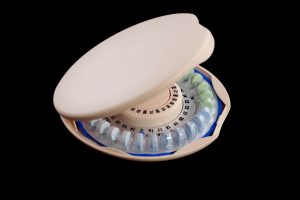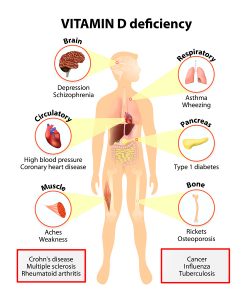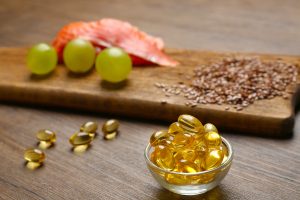A recent study showed that the birth control pill increases the risk of breast cancer. This publication did research on 1.8 million of women of Denmark who took various forms of contemporary birth control pills (BCP). They were under the age of 50 and the observation of the participants continued for about 11 years.
Risks for breast cancer
When a woman took the BCP for less than one year, the risk of developing breast cancer was 9% higher compared to controls. But this rate increased even more to 38% after the use of the BCP for over 10 years. Women who had used progestin only intrauterine devices had a risk of 21% to develop breast cancer. It did not make a difference whether the BCP was a mix of estrogen and progestin or progestin. Researchers expressed the risk in the following fashion:
- Less than one-year exposure to BCP: a 1.09-fold risk to develop breast cancer
- Over 10-years use of BCP: a 1.38% risk to develop breast cancer
- IUD with progestin in uterus: a 1.21% risk to develop breast cancer
Strokes and Heart attacks from the BCP
At the 86th Annual Meeting of the Endocrine Society in New Orleans/Louisiana a Canadian delegation presented this data. They had done a meta-analysis of 14 trials regarding side effects of the birth control pill (BCP). These women had taken the BCP on a prolonged basis (Ref. 1). The researchers monitored the risk of heart attacks and strokes. They found an association with the prolonged use of the low dose estrogen BCP. Researchers examined all of the studies between 1980 and October of 2002. 14 independent studies qualified for the meta-analysis.
Metaanalysis of BCP caused heart attacks and strokes
The strength of such a meta-analysis lies in the pooling of data and the fact that the data comes from a much larger patient population, which generally makes the results more reliable. Dr. J. Baillargeon from the Centre Hospitalier Universitaire in Sherbrooke, Quebec/Canada, stated that they found a
- 85-fold risk for developing heart attacks with long-term use of the BCP and at the same time there was a risk of
- 54-fold of hemorrhagic strokes with long-term use of the low-dose BCP.
It is important that women who contemplate going on the BCP know not only about the dangers of developing breast cancer, but also about the dangers of heart attacks and hemorrhagic strokes.
Lessons learnt from the Women’s Health Initiative
The Women’s Health Initiative in 2002 showed that women who were on Premarin and progestin for hormone replacement in menopause came down with breast cancer, heart attacks, stroke, and thromboembolic events. https://www.ncbi.nlm.nih.gov/pmc/articles/PMC3127562/
They were using the synthetic hormones, namely conjugated equine estrogen and medroxyprogesterone acetate. The reason these women had to suffer these side effects was because their physicians insisted on using “pure hormones that a drug company had manufactured”. But these synthetic hormones were not pure hormones; they were hormones adulterated with side chains so that pharmaceutical companies could patent them.
Misfit of synthetic hormones with hormone receptors
These side chains made the synthetic hormones not fit the body’s hormone receptors. And this is the reason why the synthetic hormones created chaos in the body with breast cancer, strokes and heart attacks. In essence the mix of conjugated equine estrogen and the medroxyprogesterone were functioning like estrogens. So, there was an overdose of estrogenic hormones when taking these hormones and this use resulted in the development of breast cancer, heart attacks and strokes. The BCP is very similar to these hormones that are in the medication for hormone replacement therapy in menopause, but the hormone dosage in the BCP is much lower.
Other high-risk settings for women taking the BCP
There are other higher risk subpopulations of women who should avoid the BCP:
- Had 1st degree relative with breast cancer on one breast :5-fold relative risk ; there is a genetic reason for breast cancer here
- 1st degree relative with breast cancer on both breasts : 9.5-fold relative risk ; genetic risk more obvious.
- No relative, but patient had history of breast cancer : 4-fold relative risk ;
- First child born later than 30 years of age : 1.9-fold relative risk ; in comparison with a woman who has her first child prior to age 20
- If woman consumes 3 oz. of alcohol per day : 2-fold risk; in comparison with woman not using alcohol or BCP
- Prior radiation for Hodgkin’s disease (age 10 to 19) : 10- to 75-fold risk; radiation exposure during time of breast development leads to an enormous risk ratio about 15 years later
Mechanism of the BCP
The BCP or OC (oral contraception) utilizes the fact that ovulation (=release of a fertile egg) requires a complex interaction between hormones to occur. The gonadotropin hormones LH and FSH from the pituitary gland must stimulate the ovaries. The right mixture of estrogen and progesterone from the ovaries achieves this. Without that proper hormonal interaction ovulation will not take place leading to an infertile cycle. With contraception scientists were able to suppress ovulation for as long as patients are taking the birth control pill regularly. By giving a small amount of estrogen and progesterone like substance (called “progestin”) in the oral contraceptive form (the birth control pill) ovulation stops, the lining of the uterine cavity becomes stable through estrogen, and the mucous plug in the cervical canal thickens, making it much more difficult for sperm to enter.
Estrogen dominance from the BCP
The Women’s Health Initiative has taught physicians a tough lesson: you cannot mess with nature’s hormones or else you create a risk of strokes (41%), heart attacks (29% more), blood clots (twice as many), breast cancer (26% more), colorectal cancer (37% more) and the patient will have a higher risk for Alzheimer’s disease (76% more often). This was a trial involving over 16,000 postmenopausal women.
Although the hormones used in these women were slightly different in concentration, structurally they were very similar to the ones used for birth control purposes. What nature seems to tell us is that you cannot mess with hormone receptors, or you set up the body for one of the diseases mentioned.
Hormonal disruption
The truth is that the combination of synthetic estrogen-like and progesterone-like substances in the BCP are not bio-identical hormones. They suppress ovulation, which means they are creating progesterone deficiency in the woman who takes these synthetic hormones. The end result is that physicians create estrogen dominance in these women, which according to Dr. Lee is the reason for the above listed complications (Ref.2).
It makes more sense to use less invasive alternatives for birth control methods instead of the BCP. A well-fitted IUD (inserted by a gynecologist) is a good alternative. This will not create havoc with the woman’s hormones and will not create infertility after contraception is no longer needed. Bio-identical progesterone replacement using creams is being used to rebalance the original hormones when the BCP is discontinued.
Conclusion
The birth control pill (BCP) is a popular form of contraception. But there are significant risks of breast cancer, heart attacks and strokes associated with its use. According to the previous literature the risk of complications associated with the BCP was between 1.3- and 1.6-fold. The present study with smaller concentrations of hormones in the more modern BCP still showed a risk of 1.38-fold regarding breast cancer. It did not mention heart attacks and strokes as additional risk factors. The Danish study was supported by a grant from the Novo Nordisk Foundation. Novo Nordisk is a major producer of BCP’s in Europe and in the world. It would be in their interest to minimize the risks associated with the BCP. Any woman using the BCP should use it only as long as she really needs it. Ultimately she would be better advised to use alternatives like IUD’s and condoms.
References
- https://www.askdrray.com/birth-control-pill-increases-strokes-and-heart-attacks/
- John R. Lee, David Zava and Virginia Hopkins: “What your doctor may not tell you about breast cancer – How hormone balance can help save your life”, Wellness Central, Hachette Book Group USA, 2005. Page 360 to 374 explains xenohormones.















